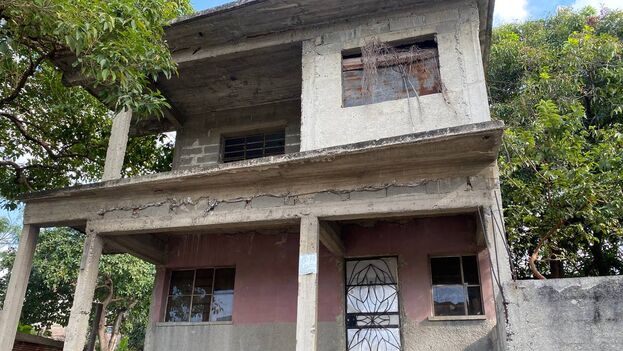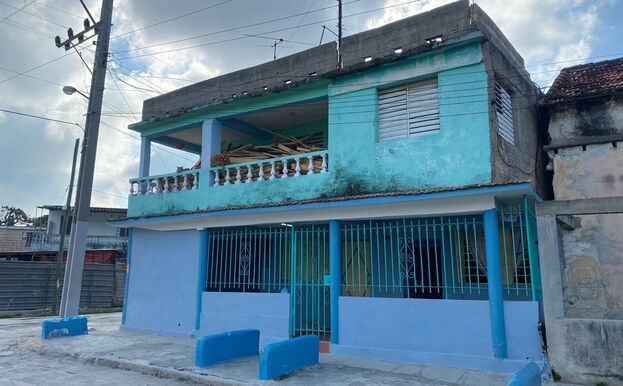
![]() 14ymedio, Luz Escobar, Havana, 24 February 2021 — Since the Cuban Government released the news that Architecture is among the 124 activities that individuals are prohibited from engaging in privately, the profession has not stopped looking for spaces to express its discontent, sometimes from pessimism and disenchantment, other times from searching for solutions.
14ymedio, Luz Escobar, Havana, 24 February 2021 — Since the Cuban Government released the news that Architecture is among the 124 activities that individuals are prohibited from engaging in privately, the profession has not stopped looking for spaces to express its discontent, sometimes from pessimism and disenchantment, other times from searching for solutions.
After two weeks of public debates among professionals, 14ymedio sought the opinion of some of those Cubans who have built their homes “by their own effort” without ever having seen an architect. 14ymedio has also consulted experts about the consequences that this practice can bring for the urban environment of the city.
“But who said that an architect is needed to build a house?” Iván Calvo, 52, of El Cerro, counterattacks, when asked if he had hired the services of a professional to build his home.
In 2018, after nearly a decade laying one brick over another, Calvo finally finished building his house. Every afternoon he goes up with his friends to the terrace to play dominoes and feed the pigeons that he raises with his 17-year-old son.

“My life is my home, along with my family and my birds. I raised it by myself, with only the help of some cousins of mine who came over some weekends. I never needed an architect, beyond the bureaucratic paperwork with the house, the bricklayer I hired and I did all the work”, he concludes.
Rafael Fornés, a Cuban architect residing in Miami, declares that building without the guidance of a professional leads to “structural dangers” in the property that can later “cause collapses”.
“Havana survives because it was very well built under capitalism, with excellent professionals, who have been banned since ‘59. The legacy, the heritage and the wonder city are the result of the experience of Cuban architects and builders.”
Silvia lives in the house right next to Calvo’s, a young woman barely 26-years-old who, together with her husband, built a house on the roof of the property of her in-laws, but she sees it differently.
“The community’s architect is supposed to be there to develop the project but I wanted to do something decent so I looked for another way. I went to a friend with an Architectural degree who drew up the plans for me under the table, and then he just bribed the Housing official to get his signature, which is the only one approach the authorities recognize”, he explains.
Silvia’s friend makes a living in a professional studio that she founded three years ago with two colleagues. “Everything is very absurd, he has an Architecture degree, but in order to legalize his business and pay taxes he had to get a party decorator license,” said the young woman.
“Everything is very absurd, he has an Architecture degree, but in order to legalize his business and pay taxes he had to get a party decorator license”
The event has given rise to anecdotes such as the inauguration of the Monument to the Cuban Decorator, created in 2019 by the independent Arquitectura Infraestudio project as a “tribute” to that legal figure that allows them to exist and earn a living from their studies.
For architect Rafael Muñoz, the country needs construction professionals to “take charge” of the cities again. “We are submerged in an urban chaos that is annihilating the nation’s immense construction heritage”, stated the professional from Berlin, the city where he now resides.
“There is no insurance and no insurance companies in the country for professionals (to practice without them is suicide), there are no laws that specialize in real estate issues, there are no bids for public works, but contracts get awarded in a murky way or, worse still, they are ordered from overseas. There is also no transparent and binding pricing policy, there are no bank loans that allow the purchase of equipment or software licenses. No professional should practice with pirated software. If we want to be respected, we must respect the work of the others”, he specified.
Architects believe that they can contribute little to their colleagues’ statement from the Group of Cuban Architecture Studies (GECA) in which they demand of the Government, from an architectural and city point of view, to conduct this activity independently.
However, he claims “to address the issue from another point of view no less important, the human side and the ethical side” because he considers that recent laws “reinforce the deformation of the inverted pyramid” of Cuban society.
“The more you know, the more you study, the more you learn, the less chance of a decent life the country offers you. This discourages study and efforts to improve. Any young Cuban who chooses to enter university studies knows in advance that he will be choosing to be placed at the lowest level of that pyramid voluntarily. They are less and less willing to do so”, he explained.
The architect provides specific information about his generation but that illustrates the phenomenon in a general way: “In July 1989, 101 young architects graduated from the Cujae School of Architecture (José Antonio Echeverría Technological University of Havana). Today, more than 80 have left the country. This phenomenon, which nobody talks about, is repeated in every graduation and in every university degree in Cuba. Cuban universities are a machine for creating emigrants”.

Muñoz calls on those who “are at the helm of national ship” to give young people the opportunity “to assume their own future” or they “will continue to leave the Island en masse.” For him, the long-awaited legalization of Architecture and Engineering studies in the country faces “challenges that colleagues should not underestimate either.”
Architect Ruslan Muñoz, professor at La Cujae, published on his Facebook profile on the 11th a list of government measures that, in his opinion, have damaged the profession since 1960.
Among them, he highlighted the intervention and nationalization of construction companies and all their related industries in 1960, the closing of the planning companies and the gradual emigration of professionals between 1960-1963, the closure of the National College of Architects in 1967 and the Revolutionary Offensive in 1968 that nationalized all the remaining private business in the country, right down to the shoe shiners. He culminates his list in 2021 with the prohibition of the private practice of architecture and engineering, although he urges his colleagues to provide more data.
____________
COLLABORATE WITH OUR WORK: The 14ymedio team is committed to practicing serious journalism that reflects Cuba’s reality in all its depth. Thank you for joining us on this long journey. We invite you to continue supporting us by becoming a member of 14ymedio now. Together we can continue transforming journalism in Cuba.
